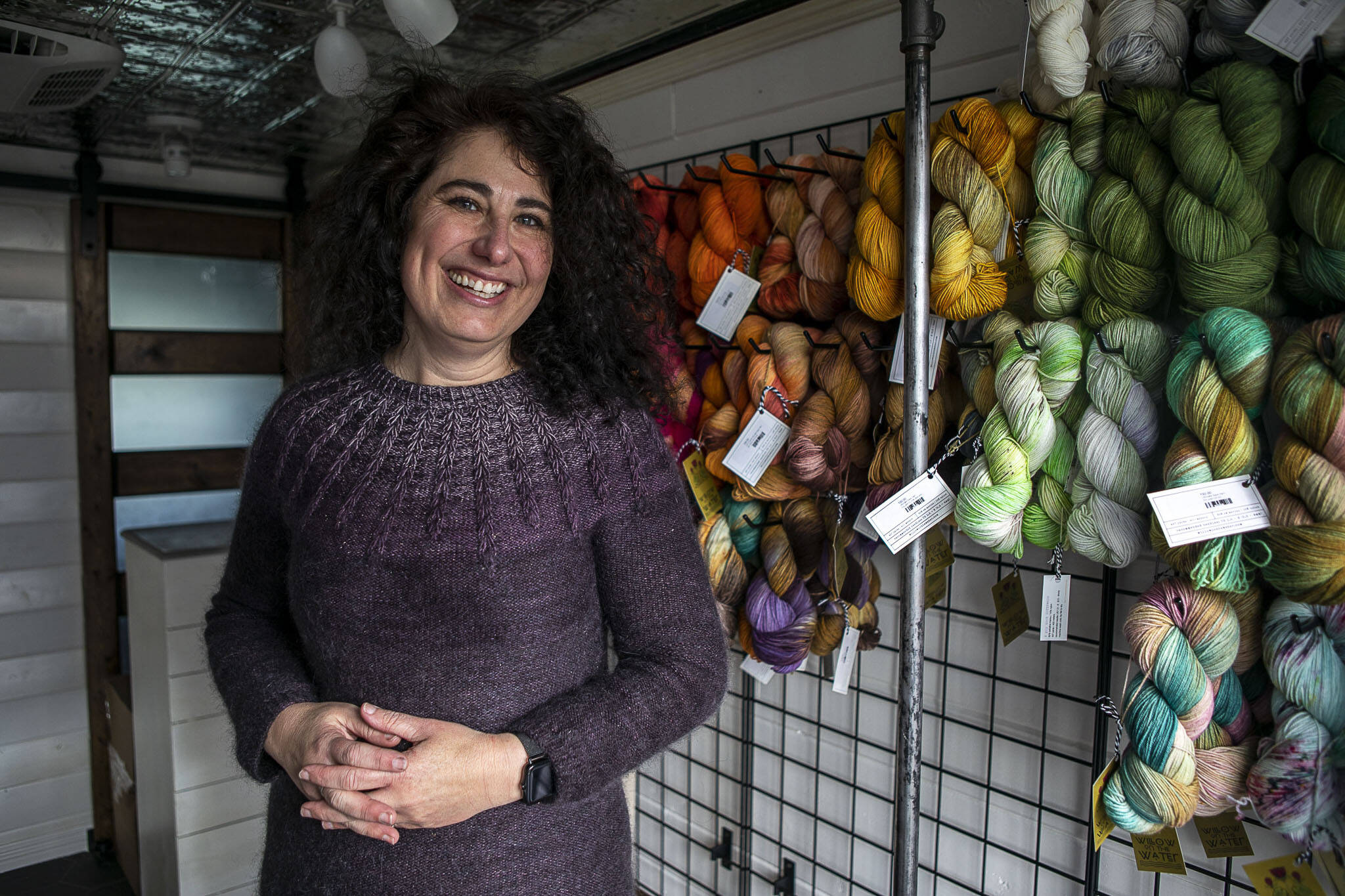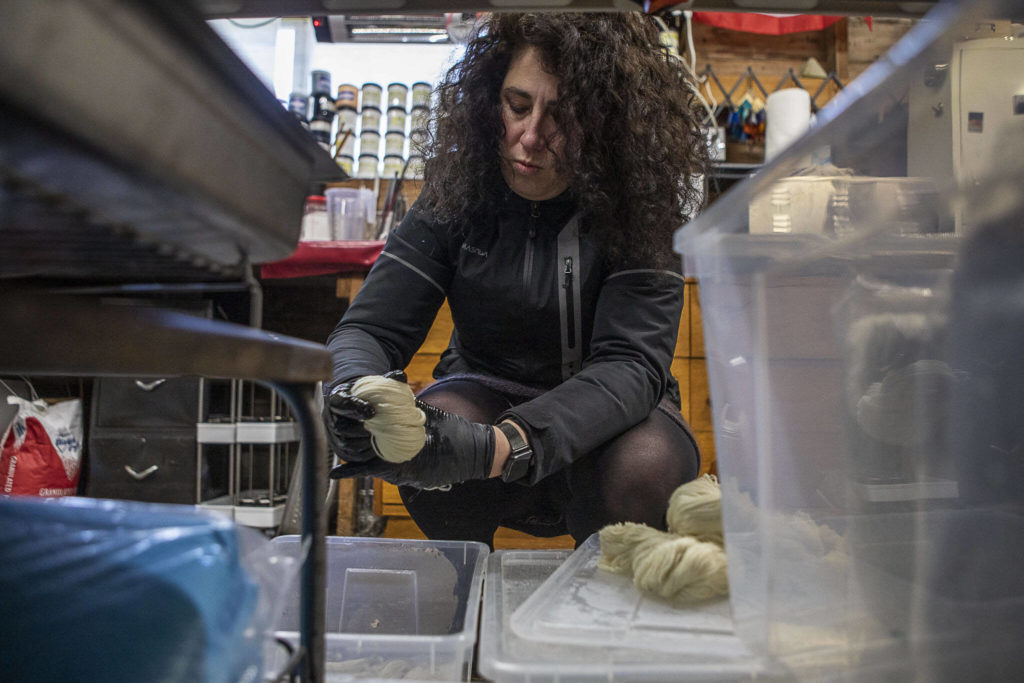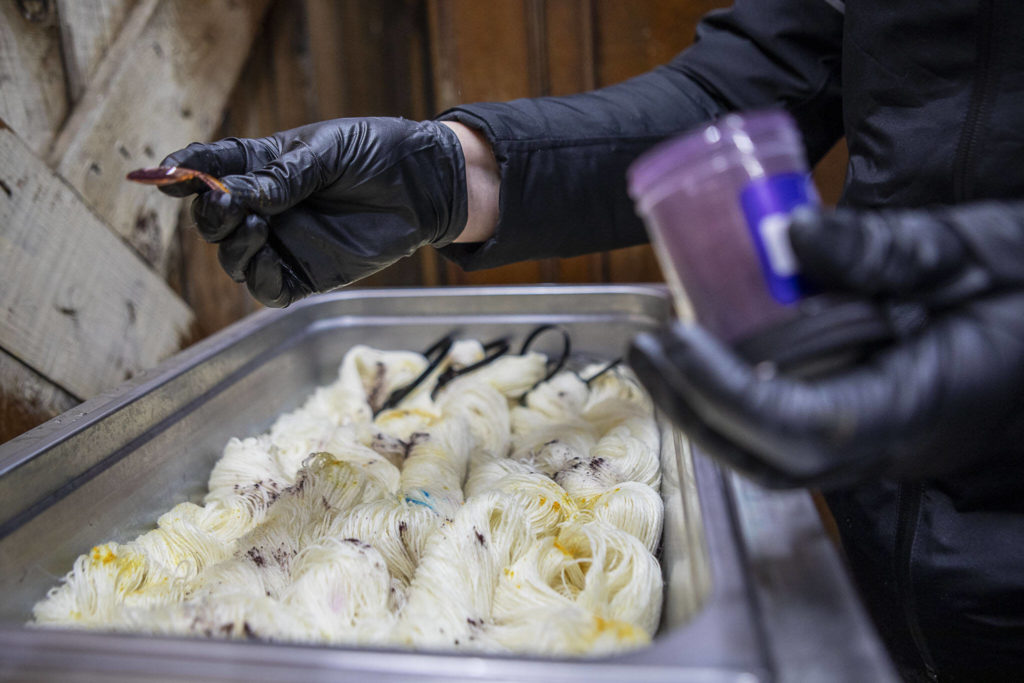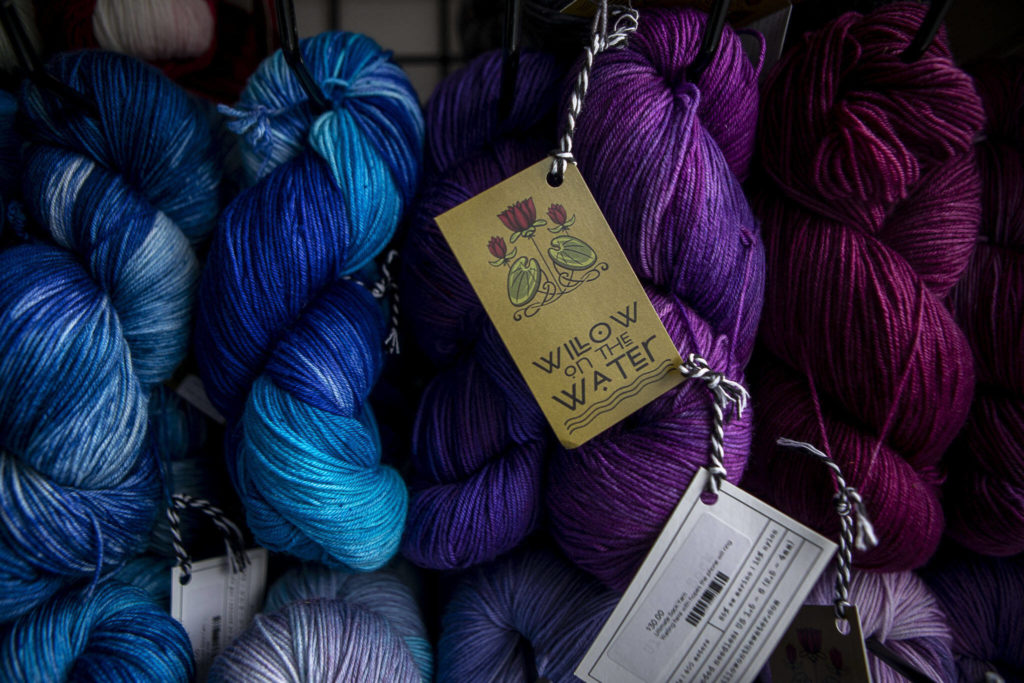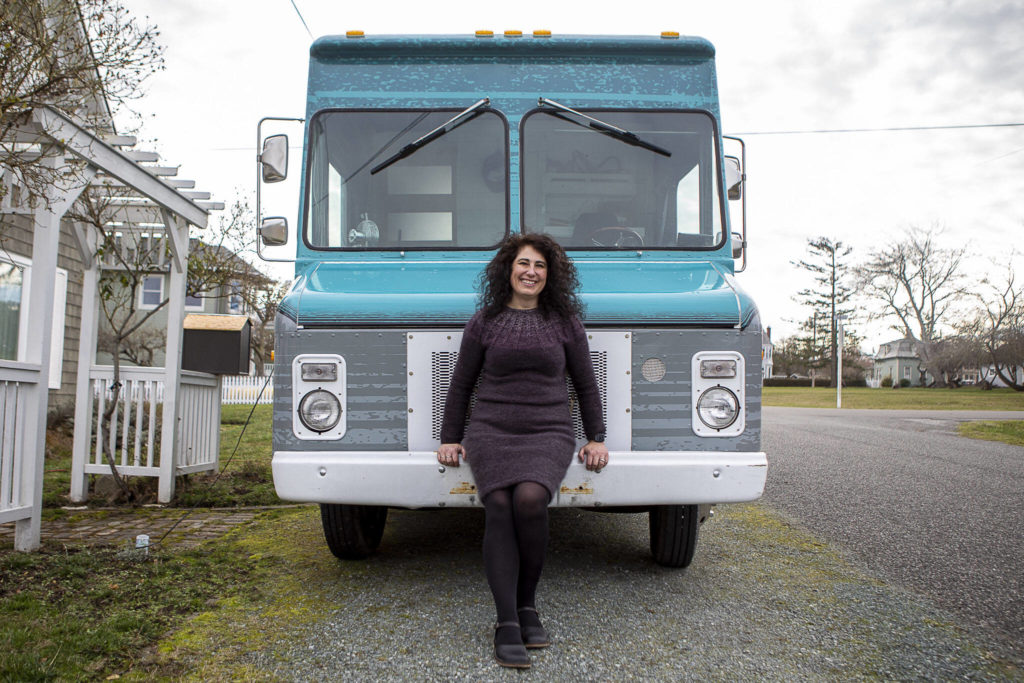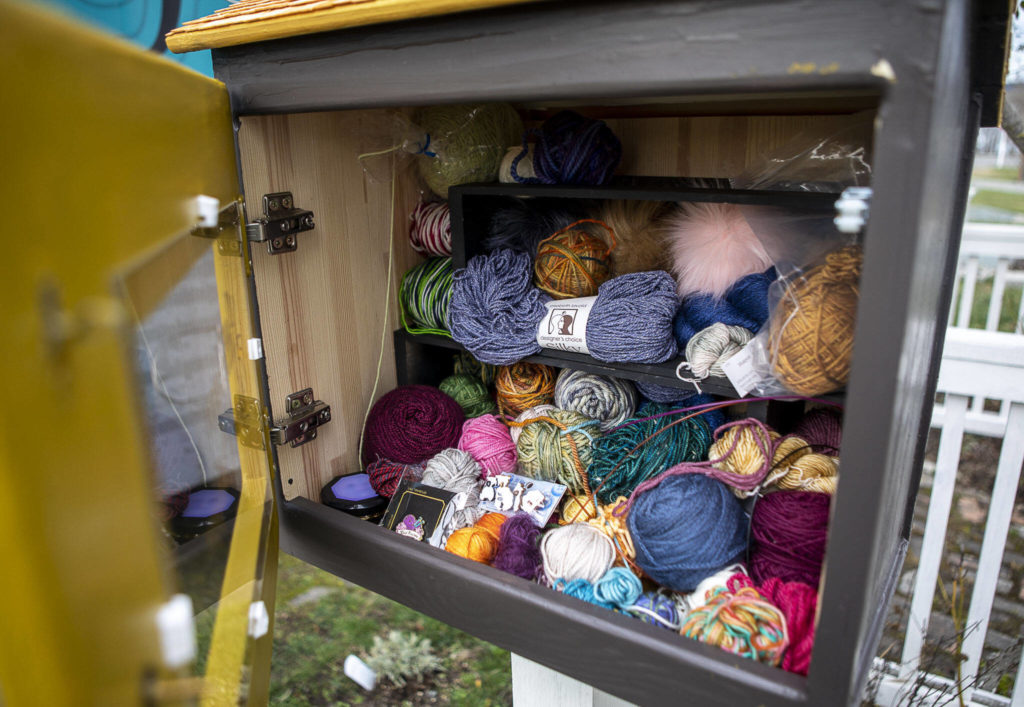COUPEVILLE — There’s a new boutique on Whidbey Island, and it’s on four wheels. The Wool Wagon will make appearances at Island County farmers markets this spring.
Self-described “professional yarn temptress” Willow Mietus, 50, hand dyes yarn and sells it under the name Willow on the Water. Mietus wanted her own retail space, but the search turned up nothing. So she got creative and paid $17,000 for a mobile boutique from New Mexico. After a month, the truck arrived at her home in Coupeville on Jan. 27.
“I squeaked like a little girl, and I’m not a particularly squeaky person in general,” Mietus said about when the truck arrived. “But yeah, I was giddy because it had been such a process to get it. All the planning and all the dreaming is finally real. It wasn’t real when I wrote the check. It was real when I touched it.”
Most of Mietus’ yarn is $30 for a skein, a loosely coiled length of yarn. The vast majority is made from extra fine Merino sheep white wool because “it’s ridiculously soft and squishy,” but Mietus has dyed yarn made of wool from goats, yaks and camels.
“Mad scientist approach”
Her laboratory is an 1890 carriage house with no heating.
It’s here Mietus uses a “mad scientist approach” to dying, where nothing is measured and batches are difficult to replicate. The three dye methods Mietus uses are immersing yarn in a dye bath, putting yarn into a tub of clear water and then adding premixed dye on top or sprinkling dye powder on top of the yarn. Sometimes she uses all three methods in a single batch. And when possible Mietus uses collected rainwater for added effect. The end result is a one of a kind color.
“You and I can both dye yarn side by side using the exact same dyes, the exact same wool, and we will come up with very, very different results,” Mietus said.
It was hard for Mietus to brainstorm enough color names, so she names her yarn after song lyrics, typically from musicians like Ani DeFranco, Counting Crows, Florence and the Machine and The National. Examples include:
• You said yes, as I said please
• End of Love
• Concrete in Houston
• Peach Melba
• I could have been anyone
Mietus grew up in Sonoma County, California, and moved to Whidbey Island in 2010 for her husband’s job, who is a senior officer in the navy. She focused most of her energy toward raising two kids, and in her spare time knitted. Constantly, Mietus struggled to find the exact yarn color she wanted, so she started dying her own.
The craft became Mietus’ “moment of Zen,” and helps her have a clear mind.
“I need to be creating something,” Mietus said. “And if I’m not creating yarn, it’s usually a mess.”
Dying yarn was a hobby for Mietus. That changed after she pitched the idea of hosting a pop-up shop at Sea Bre’s Yarn in Coupeville. Owner BreAnna Havel said Mietus “brought in a whole mountain of yarn” in May 2019. She has carried it in her store ever since.
“She has this knack for color and quality,” Havel said of Mietus. “She knows what good yarn is, and she gets it.”
“The Wool Wagon”
Mietus also started selling her yarn at local farmers markets. She said last fall was “a nightmare” as the island weather in September was not favorable for outdoor yarn sellers.
“Not only did it rain, it came down sideways,” Mietus said. Her yarn got soaked. And the next week it got covered by ash from the Bolt Creek Wildfire. Mietus had to use a blowdryer to get rid of the campfire smell.
She thought there had to be an alternative. And when Mietus couldn’t find a nearby retail space at the right price, she took inspiration from another market seller and sought out a truck. She thought selling out of a vehicle would make her stand out without tying her down to any one address.
After some looking, Mietus came across one for sale on Instagram. In its previous life, the 1978 Frito-Lay truck was a mobile boutique called The Dyed Poppy that operated for five years in Farmington, New Mexico.
“She’s got character. Her top speed is 55,” Mietus said. “So my apologies in advance to anyone who drives behind me.”
Now that she has the truck, the plan is to have it vinyl wrapped with new branding. Or as Mietus puts it: “She’s going to get dressed for her debut.” The newly christened Wool Wagon is scheduled to premiere at the Bayview Farmers Market 10 a.m. to 2 p.m. on April 29 in Langley.
For more information, visit willowonthewater.square.site.
Eric Schucht: 425-339-3477; eric.schucht@heraldnet.com; Twitter: @EricSchucht.
Talk to us
> Give us your news tips.
> Send us a letter to the editor.
> More Herald contact information.
